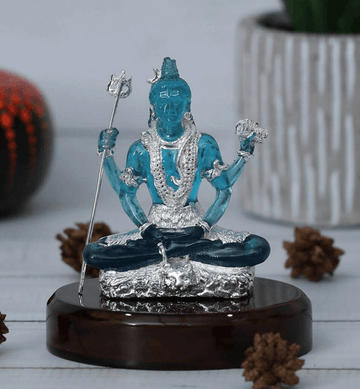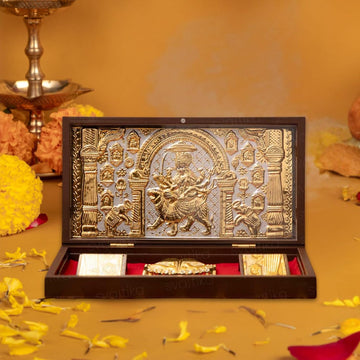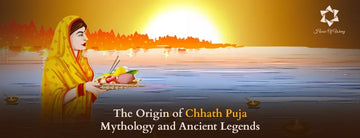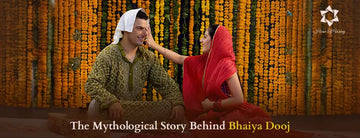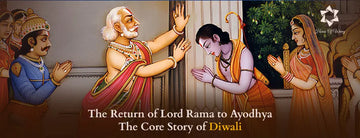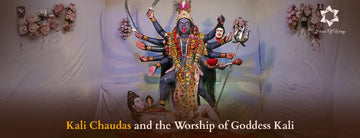Introduction to Chhath Puja
When the sun starts to soften in late October or November, the riverbanks -- in Bihar, Uttar Pradesh and Jharkhand states -- become glint fields of worship. In bright saris and carrying bamboo baskets, women make their way to the temple of the rising Sun, children light diyas while men travel to Surya Setu. It is Chhath Puja, one of India’s oldest festivals, and possibly the only one in which devotees offer prayers to both the setting and rising Sun.
But whence this festival? How did we come to associate it with purity, gratitude and strength? Explore the mythological and historical origins that mean Chhath Puja 2025 is more than just a ceremony – it’s a living, breathing link between man and nature.
Historical Significance of Chhath Puja
Unlike most of the Hindu festivals, which involve idol worship, Chhath Puja is dedicated to the Sun. Its roots trace back to the vedic understanding, where the Rigveda’s Hymns and Prayers mention rituals of Surya Dev, the Sun god along with his mistress Usha. The sun’s rays were considered to have the power of curing diseases, giving wealth, which is why the Sun became an important God in early Hinduism.
Archaeological findings near Patna and Gaya suggest that the Chhath Puja rituals may date back 3000 years: such artefacts commence around 1500 B.C. and are still in existence to this day, on the banks of the Ganga river as well as a similar riverside celebration associated with Jagannath wheels. This later turned into a controlled festival with rituals such as chhath puja fasting, bathing and ritually offering arghya (water to the setting sun).

Mythological Origins of Chhath Puja
The mythological tale in Chhath Puja spread devotion, determination and blessings. There seem to be three main Chhath Puja legends that relate how the festival came to be, together explaining why it is held in such esteem.
King Priyavrat and his Queen were made popular as a Legend
King Priyavrat (1st son of the 1st Manu) is described as childless in the ancient texts. Distressed by this, he and his wife prayed to the Sage Kashyapa, who advised them to perform a yajna in honour of the Sun God. Their prayers were heard, and they had a son. But the baby was delivered for a short span of life.
The Sunless Queen, weeping and mourning, prayed for his calmness on all days and nights. Ashiwan came in her heartbreak. She heard a divine voice telling her to observe Chhath vrat -- a penance with fasting and prayers to the Sun with complete devotion. She observed it perfectly, and her son miraculously came to life. From then on, this vrat has been considered holy for desire fulfillment and the rise of hope.
The Tale of Lord Rama and Sita
The Ramayana is closely associated with this festival as well. Lord Rama and Mata Sita returned from Ayodhya after killing Ravana, while back they offered Chhath Puja to thank Surya Dev.
On the sixth day of the month (Shashti), they prayed and poured water to the descending sun, fasted during that night, and poured water again at sunrise. It is the pride of light over darkness.
Mahabharata Karna Legend
Another popular legend links Chhath Puja with Karna, the Mahabharata warrior. He was the only person who supported his father to be in pain by seeing a villain and because of this evilness, he became cruel to everyone.
According to legend, Karna would bathe in knee-deep water during sunrise and offer arghya to the Sun God, seeking strength. This ritual is still observed by many worshippers, who link their devotion with Karna’s unflinching belief.
Legend of Lord Surya and Chhathi Maiya
It also complicates the existence of Chhathi Maiya, who is believed to be the Manas Putri (mineral daughter) of Lord Brahma and protector of children. People worship her with the Sun God, signifying motherly energy and light.
In numerous homes, followers consider the Chhathi Maiya to bless their family with overall well-being and especially when blessed with a baby or during pregnancy. This theory is rooted in the ancient Indian doctrine of cosmic energy – perfect harmony between the male (Sun) and female (Earth) principles.
Importance of Worshiping the Sun God
In Hinduism, the Sun (Surya) is much more than a celestial body -- it stands for life itself. The Chhath Puja importance is to celebrate this close connection between man and nature.
Worshippers will fast for 36 hours without eating or drinking, representing surrender and discipline. They meditate at dawn and dusk -- the two times when natural rhythms change, energy adjusts. Scientifically, these times are believed to be the best for taking in the sunrays and, therefore, receiving benefits for mental and physical health.
This fusion of science and spirituality is what sets Chhath Puja apart from other Hindu festivals.
Chhath Puja in Ancient Hindu Scripture
Mentions of Chhath Puja can be found in historic texts like Rigveda and Mahabharata.
King Dasharatha, too, was believed to have performed similar sun rituals in order to tackle issues in his kingdom. These links demonstrate that Chhath isn’t just a local festival -- it’s India’s longest-surviving form of energy worship.
Spiritual Significance of Fasting and Rituals
Fasting on Chhath Puja 2025 is not just a religious ritual -- it is also a detox of the body and the mind. Devotees fast -- without even a drop of water -- for the better part of almost 36 hours, devoting all their energy to prayer.
This fast symbolizes purity, restraint and self-control. Scientifically, it’s for the body to reset and cleanse itself. Spiritually, it eliminates the distraction, enabling one to get in touch with the divine force directly.
The ritual also underscores equality -- there’s no priest, no temple, just you, nature and devotion.
Preparations for Chhath Puja
Preparations begin days in advance. Houses are washed and devotees maintain purity carefully. Ritual tools are either new or washed carefully to preserve their holiness.
Pooja Essentials such as bamboo baskets (daura), clay diyas, sugarcane stalks, fruits, coconuts and earthen pots are bought by people. They're symbolic in their minimalism and sustainability -- which mirrors the festival's bond with the environment.
Step-by-Step Guide to Performing the Rituals
Nahay Khay (Day 1):
The worshiper bathes in a river and prepares rice and pumpkin cooked on a clay stove made with mango wood. Here is where purity begins.
Kharna (Day 2):
On the next day, devotees fast from sunrise to sunset and break their fast after sunset with gud ki kheer (jaggery pudding) and fruits. After that, they have 36 hours in which to fast without water.
Sandhya Arghya (Day 3):
The most recognizable point of Chhath Puja. Devotees congregate at riverbanks to wash bye-bye the Sun by offering water and fruits while singing folk songs and praying for family welfare.
Usha Arghya (Day 4):
On the last morning, devotees visit the riverbank to pray to the rising Sun before breaking their fast. The fast ends at this time.
Traditional Offerings and Prayers
The offerings -- Khajoor, fruits, sugarcane and coconuts -- each have a symbolic Chhath festival significance. They signify the bounty of nature and are completely biodegradable, adding to the eco-friendly nature of Chhath Puja customs.
Followers recite the Surya Gayatri Mantra and sing folk hymns that have been passed down through generations. These are the songs telling the Chhath Puja story, which are available through oral traditions and even handed down through generations.
Regional Variations in Celebrating Chhath Puja
The Chhath Puja traditions are largely observed in the Indian states of Bihar festival and eastern Uttar Pradesh and the adjoining areas in Nepal as well as among people of Bhojpuri-speaking regions of Madhesh. In metro cities, including Delhi and Mumbai, river banks or artificial ponds are created for the pilgrims.
Of course, from region to region, there are variations in the sentiment -- thanks to the Sun God.
Modern Relevance and Cultural Impact of Chhath Puja
In the world of speed and preoccupation we live in today, Chhath Puja reminds us to rest and get reconnected -- with nature, family and discipline. It celebrates equality -- anyone, no matter his or her caste or sex, is free to perform the Chhath Puja rituals.
The festival’s eco-friendly nature -- with its setting of clay lamps, natural offerings and biodegradable design -- could serve as a paradigm for sustainable spirituality.
For many, collecting Pooja Essentials and preparing for Chhath is more than a tradition -- it’s an inheritance holding together generations.
Conclusion
The roots of Chhath Puja mythology go beyond a heartwarming practice of faith, gratitude and synchrony with nature, which has survived the test of time. As you watch the golden dawn break on Chhath morning, keep in mind: this isn’t about scale. It is about so much devotion that even the Sun bows down to bless mankind.

